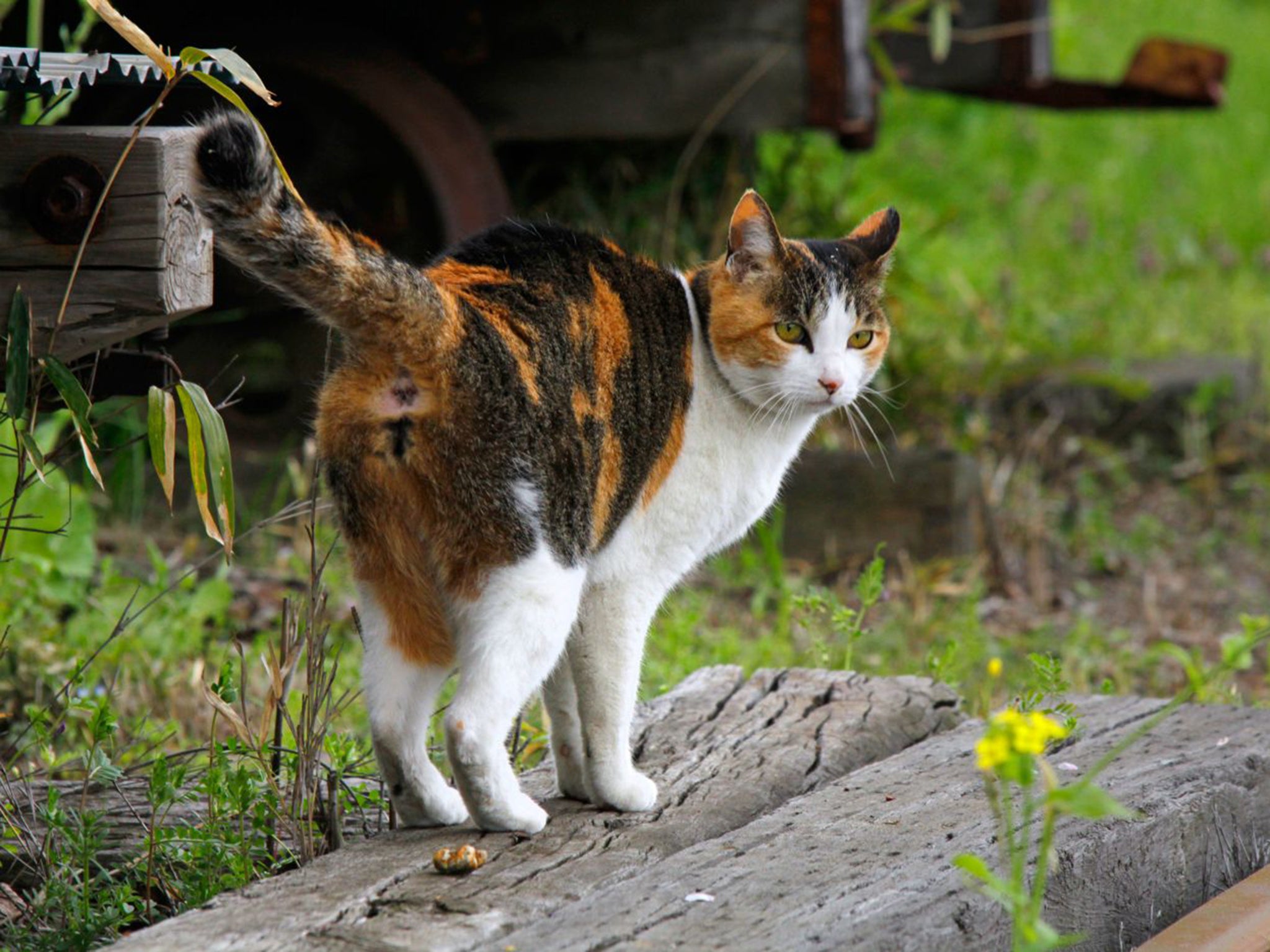A cat's level of aggressiveness could depend on its colour, say scientists
Tortoiseshell-and-white females have a mean streak

They say you shouldn’t judge a book by its cover, but maybe you should judge a cat by its colour.
Tortoiseshell-and-white cats, known as calico cats in the US, have long had a reputation for anti-social behaviour. In 1895, Henry Huidekoper – an American general who lost an arm at the Battle of Gettysburg – called the mogs “not over-affectionate, and sometimes even sinister and ill-tempered”.
It seems he had a point. Veterinary scientists at the University of California, Davis, may have found a link between the colour of a cat’s fur and its tendency to exhibit aggressive behaviour towards humans.
In a study published in the Journal of Applied Animal Welfare Science, experts used an online survey to test a “common assumption” that calico females are “significantly more often aggressive towards people” than other types of cat.
In total, 1,274 cat owners responded to the questionnaire which asked them to list the frequency and degree of their cat’s aggressive behaviour during everyday interactions, when handled and when taken to the vet. Answers were used to give each cat a rating on an aggression scale.
Comparing the average aggression rating for different colour groups, scientists confirmed that calico females, along with black-and-white and grey-and-white cats, were “more frequently aggressive toward humans”.
Male calicos are rare. Genes for orange and black fur are both carried by the X chromosome and, since females have two X chromosomes, they can carry both genes. Neither gene is dominant, resulting in a random distribution of orange and black in the coat.
The study also found that black-and-white cats were particularly aggressive when handled, grey-and-white cats had a hissy fit when they visited a vet, and calico females became stroppy in everyday interactions with humans.
The good news for cat-lovers is that the study, led by clinician Elizabeth Stelow, suggested that, overall, puss is a bit of a pushover. But if owners really want to consult the shade chart, for maximum cuddles and minimum fuss, the ideal pet is black, grey, white or tabby.
Join our commenting forum
Join thought-provoking conversations, follow other Independent readers and see their replies
Comments